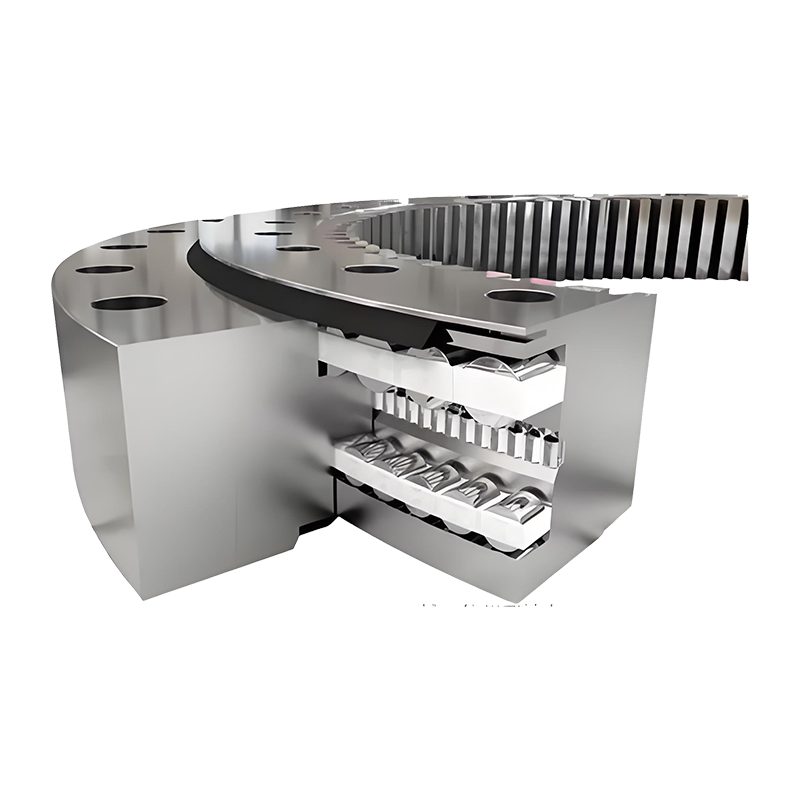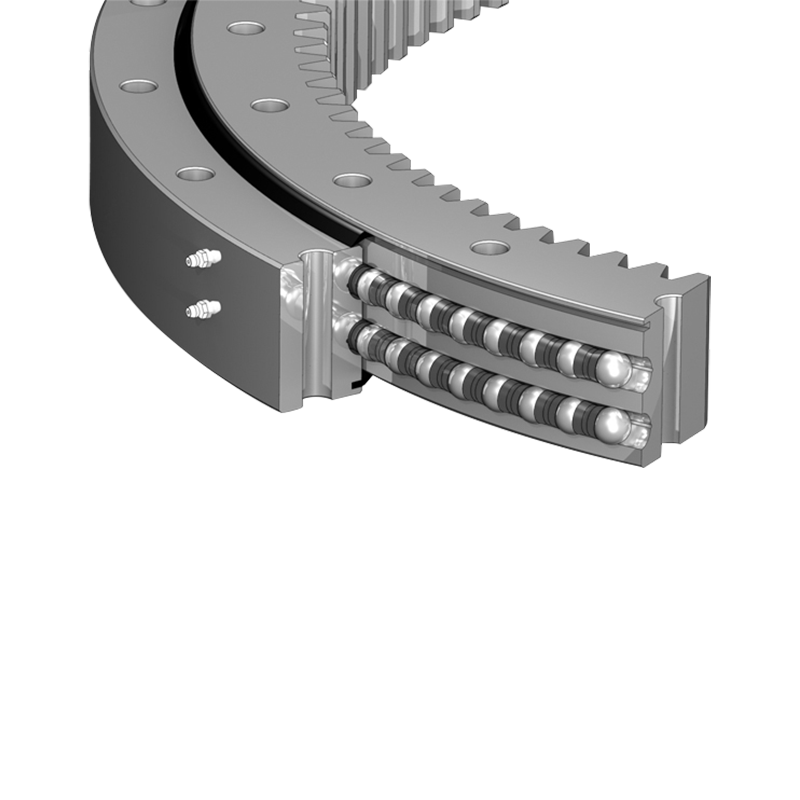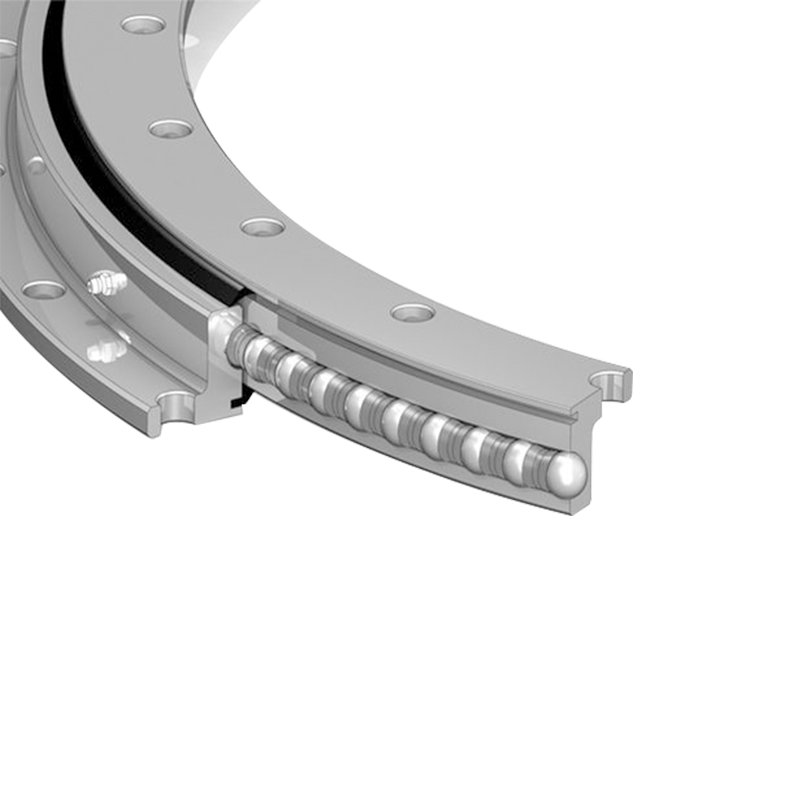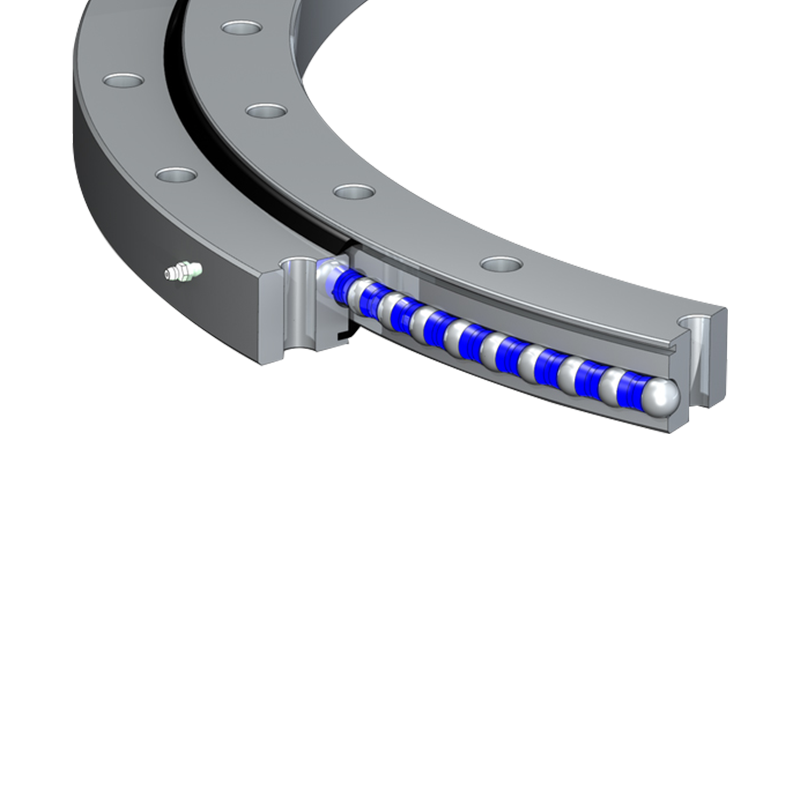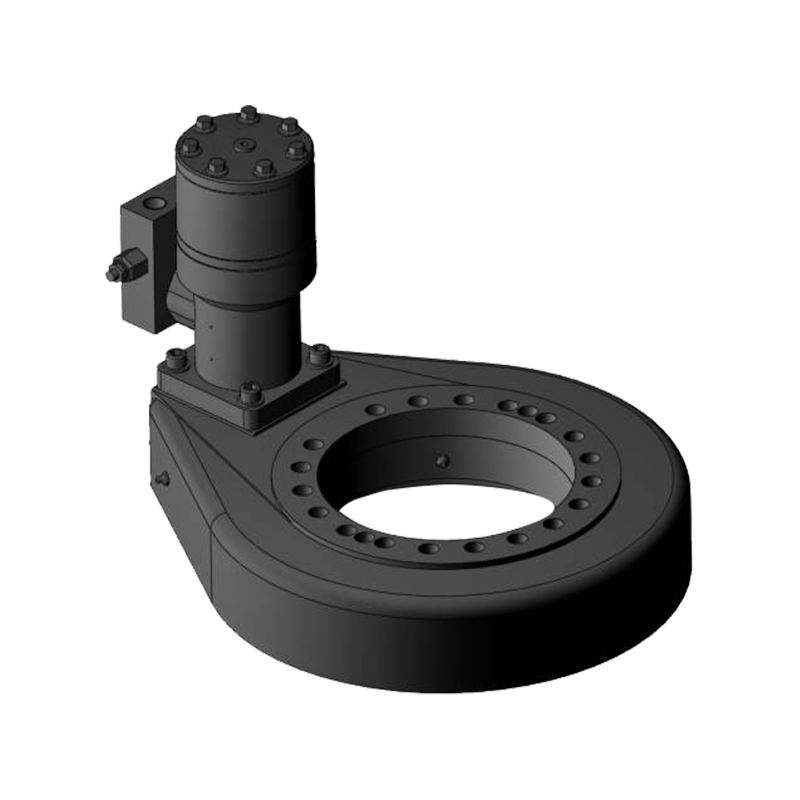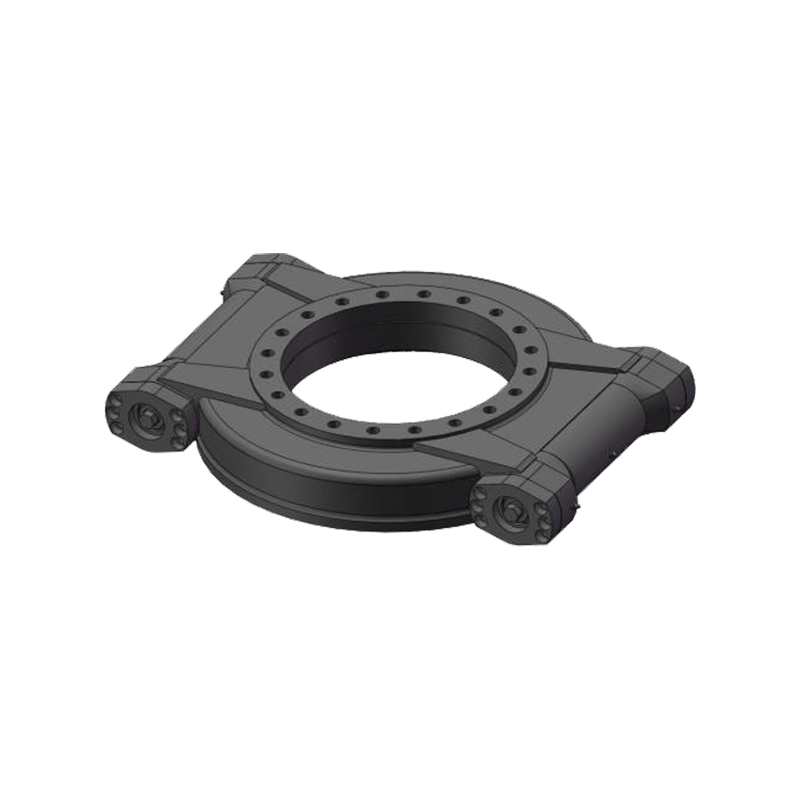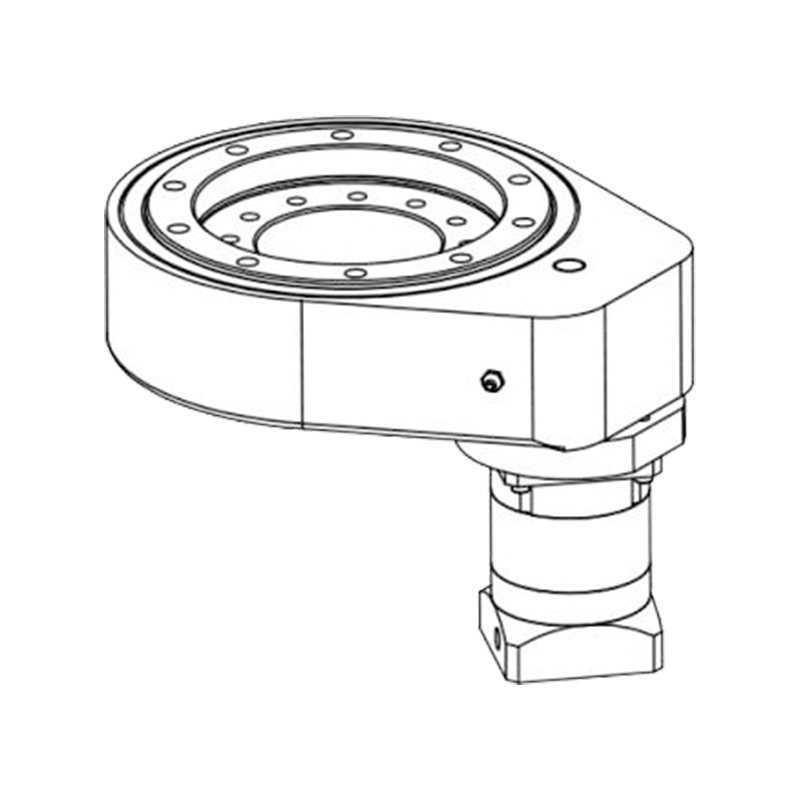Single Row Cross-Roller Slewing Bearing: Structure, Features, and Applications
 2025.09.18
2025.09.18
 Industry news
Industry news
Slewing bearings are essential components in many types of heavy machinery and precision equipment. Among the different models available, the single row cross-roller slewing bearing stands out for its compact design, high load-carrying capacity, and precise rotational performance. This type of bearing is widely used in industries such as construction, robotics, wind power, and medical equipment, where reliability and accuracy are critical.
Content
Structure of Single Row Cross-Roller Slewing Bearing
A single row cross-roller slewing bearing consists of inner and outer rings with a set of cylindrical rollers arranged alternately at a 90-degree angle to each other. The rollers are separated by spacers, which reduce friction and prevent roller skewing. This cross arrangement allows the bearing to withstand forces from different directions within a single compact unit.
Key structural elements include:
- Inner and outer raceways precisely machined to support smooth motion.
- Cylindrical rollers positioned alternately in cross arrangement for balanced load support.
- Spacers or separators to maintain uniform roller spacing and reduce wear.
- Sealing elements to prevent dust, dirt, and lubricant leakage.
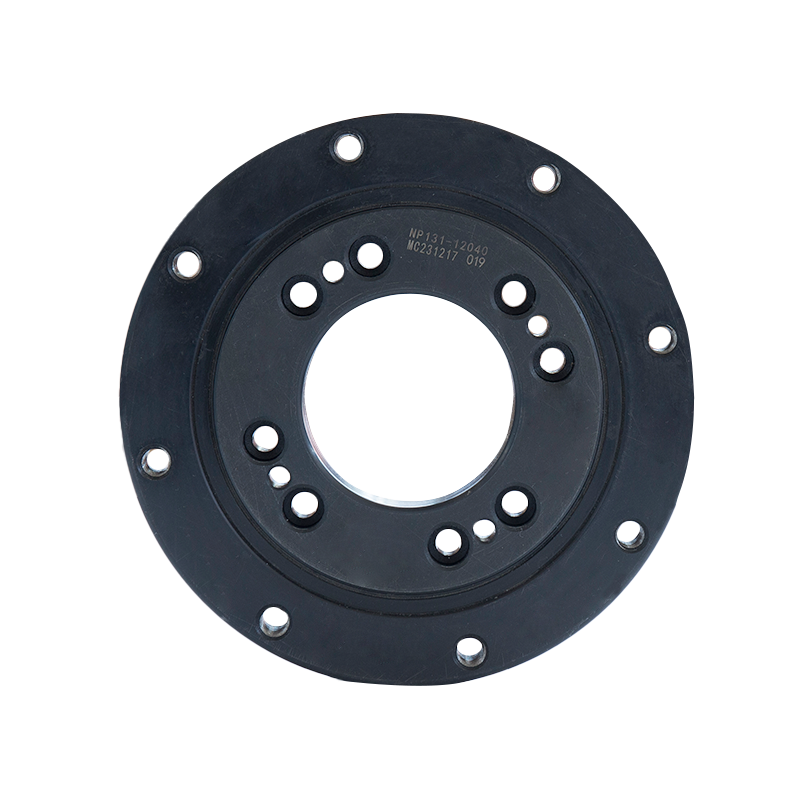
Features and Advantages
The design of a single row cross-roller slewing bearing provides several important benefits:
-
High Load Capacity
The cross arrangement of rollers enables the bearing to handle axial, radial, and tilting moment loads simultaneously. This makes it highly versatile for equipment exposed to complex working conditions. -
Compact Design
Compared with other slewing bearing types, the single row cross-roller model achieves high performance within a smaller size. This allows for more compact machinery designs without sacrificing strength. -
Smooth and Precise Rotation
With rollers positioned at right angles, the bearing ensures smooth rotation and high stiffness. This is especially important in applications requiring precision, such as robotics or medical imaging devices. -
Durability and Reliability
The use of high-quality steel and advanced heat treatment processes improves wear resistance and extends service life, even under heavy-duty working conditions.
Applications of Single Row Cross-Roller Slewing Bearing
Due to its unique design and functional advantages, this type of bearing is widely applied in various fields:
- Construction Machinery – Excavators, truck cranes, tower cranes, and concrete pumps rely on slewing bearings to rotate heavy structures smoothly.
- Wind Power Equipment – Used in yaw and pitch systems to adjust the position of wind turbine blades and nacelles.
- Robotics and Automation – Provides precise rotational movement for robotic arms, manipulators, and automated handling systems.
- Medical Equipment – CT scanners, surgical devices, and imaging systems use cross-roller bearings for accurate positioning.
- Military and Aerospace – Applied in radar systems, missile launchers, and aerospace platforms where high stability is required.
Maintenance Considerations
Like all slewing bearings, the single row cross-roller type requires regular inspection and proper maintenance to ensure long service life:
- Lubrication: Regular greasing reduces wear and prevents damage from friction.
- Bolt Tightening: Checking and tightening bolts ensures stability under heavy loads.
- Seal Inspection: Seals should be inspected and replaced if damaged to prevent contamination.
- Load Monitoring: Avoiding overload conditions extends bearing life and ensures safe operation.
Conclusion
The single row cross-roller slewing bearing is a highly efficient solution for applications that demand compact structure, high load capacity, and precise motion. Its ability to withstand axial, radial, and tilting moment loads simultaneously makes it a vital component across construction, renewable energy, robotics, and medical industries. With proper selection and maintenance, this type of slewing bearing delivers reliable performance and long-term value in demanding environments.




